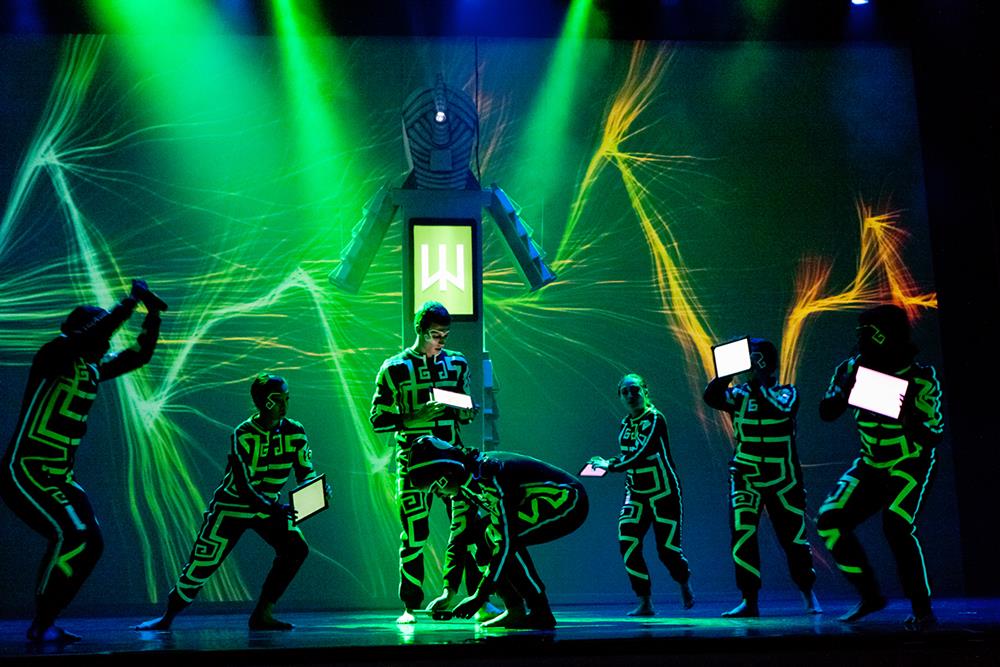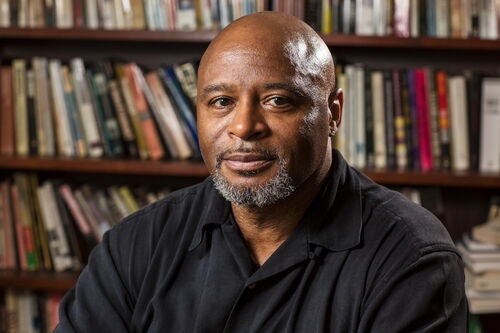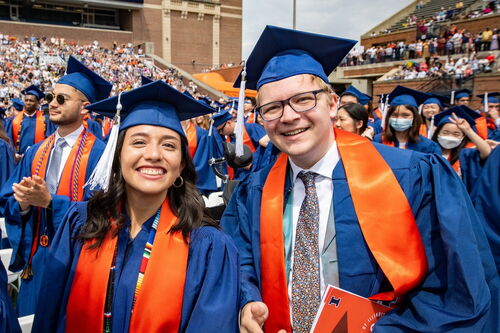Book highlights University of Illinois' 150 years of innovation
![“Engine of Innovation” is being published by U of I Press. (Cover images by Don Hamerman [top] and L. Brian Stauffer.)](/sites/default/files/news/storyimages/21890.png)
Central Illinois in 1867 was not an obvious place to plant a university that would change the world.
Illinois had no public colleges and a short history of universal public schooling. Legislators wanted only practical instruction from their new institution. And the campus was in a muddy stretch of treeless prairie.
Yet almost from the start, Illinois Industrial University – now the University of Illinois – was an “Engine of Innovation,” per the title of a new book celebrating its sesquicentennial, published by the U of I Press.
“The fact that the university was created fresh, created from the ground up, made the focus on innovation clear from the very beginning,” said Frederick Hoxie, a recently retired U of I history professor and the book’s editor. Its early leaders and faculty also saw the importance of applying academic knowledge to the problems of the world, he said.
The title “Engine of Innovation” could suggest the book is focused only on scientific or academic achievement, but its 46 articles cover a broad range of individuals, inventions and places of innovation.
Among the more familiar: the Morrow Plots, the LED, the Mosaic browser, the accessible campus, MRI, public broadcasting, and supersweet corn.
Among the less familiar: women trailblazers in the early history of the library and home economics; a hydrology pioneer who made it rain indoors; innovators in education, history and business English; and anthropologists who gave voice to the voiceless in their study of poverty.
Other articles in the book deal with Illinois’ role in offering affordable higher education, its solution to post-World War II married student housing, its early outreach to China, and the Project 500 campaign to bring more African-Americans to campus.
Two remarkable animals – a Brown Swiss cow named Illini Nellie and Big Al, the world’s first transgenic pig – also get their due.
The book illustrates how U of I innovations have arisen from unique interactions, Hoxie said. One example: Illinois had the first university-based computer, known as ILLIAC, which spawned the Experimental Music Studios and a flowering of musical innovation, which helped lead to Krannert Center for the Performing Arts.

“You could almost draw a line between ILLIAC and the performances we see at Krannert,” Hoxie said. “It really is a kind of remarkable thing.”
The book began three years ago when university administrators approached the history department looking for suggestions on how to commemorate the sesquicentennial, according to Diane Koenker, then the department chair. “What occurred to me is that we could certainly do a collective work,” she said. That would bring in more voices and cover more of the campus.
The idea was to start with the topics covered by historical markers posted around the campus, then consider other topics, with an eye toward balancing the story. “We didn't want this just to be a whitewash celebratory history of the university, but something that took a serious look at its achievements, as well as some of the ways it fell short,” she said.
“The idea from the beginning,” Hoxie said, “was that it was not really going to be a comprehensive history, but a kind of review of the past and an opportunity to reflect on it.”
Hoxie sought out William Maher, the university archivist, and Winton Solberg, a professor emeritus of history who had studied and written about U of I history. After discussing potential topics, Hoxie made decisions on the book’s content and handed out writing assignments. His contributors included fellow history professors; other academics, experts and writers, on and off the campus; and undergraduates recruited from his public history class.
In editing the book, Hoxie said he saw several key themes. One is that innovation often comes from long investment in research, during which it’s not clear what that investment will produce. Photosynthesis research that began in a basement lab in the 1950s, for instance, has led to crops that hold promise for addressing hunger.
Innovation is also “a product of synergies that are unexpected across disciplines, across expertises,” Hoxie said, citing the connection between the ILLIAC, experimental music and Krannert Center.
And innovation is “endlessly hungry,” he said. “You produce one innovation and it suggests another. It pushes the limits and it’s disturbing and it’s challenging.” Farmer’s institutes in the university’s early history, for instance, challenged farmers who didn't want advice from academics. U of I architects challenged resistant builders with standards and regulations. The first Hillel Foundation, established at Illinois in 1923, challenged notions that the state university should be a Christian institution.
Innovation is a central piece of the U of I story, Hoxie said, because it reflects the quality of interaction within the campus community, as well as the quality of its researchers and students.
“Despite the passage of 150 years,” Hoxie writes in the book’s introduction, “the commitment to innovation remains a stirring reflection of the institution’s original aspiration to be a place of ‘Learning and Labor.’”
Founded in 1867 as a land grant institution, the University of Illinois at Urbana-Champaign is both celebrating 150 years of transformative experiences and heralding an ambitious vision for the future through learning, discovery and public engagement. More information on our sesquicentennial milestones and festivities is available at http://150.illinois.edu.








